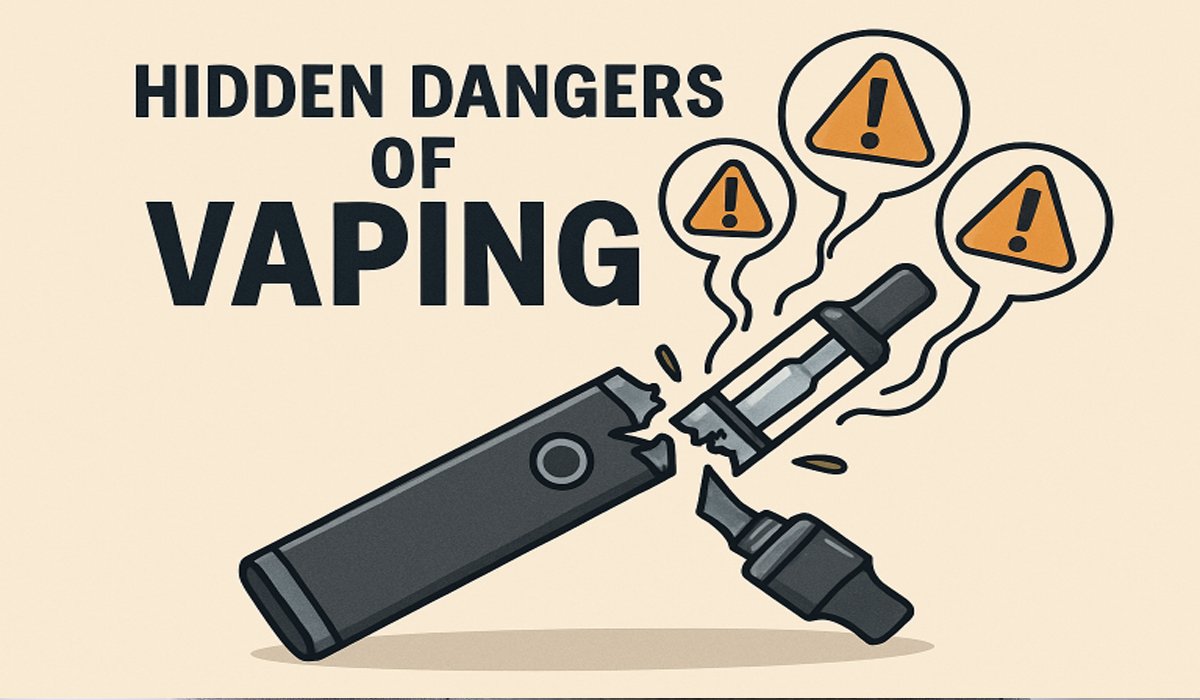Table of Contents
- Chemical Composition and Health Risks
- Cardiovascular Concerns
- Environmental Impact of Disposable Vapes
- Regulatory Challenges and Public Health
Vaping has rapidly gained traction as a modern alternative to traditional smoking, often promoted on the basis of its perceived safety, stylish devices, and the broad variety of appealing flavors. Yet, beneath these glossy marketing campaigns and bold health claims, there lies a fast-growing body of evidence warning of the significant dangers that vaping poses to both health and the environment. For those seeking unbiased information, it’s essential to peel back these marketing layers and examine the scientific realities, which are skillfully detailed in this exposé from https://www.undo.org/exposed/vapes-arent-safe. Although vaping can bypass some of the well-known risks of combustible cigarettes, it brings forth novel, often underappreciated hazards that everyone—from potential users to policymakers—must take seriously.
As e-cigarette products become increasingly accessible and their assortment continues to expand, it’s more crucial than ever to understand what’s truly at stake. It’s not just about nicotine—vaping introduces a host of other chemicals to the body, affects the lungs and heart, poses environmental threats through waste, and exposes glaring gaps in regulatory oversight. This in-depth guide will walk you through the most pressing issues surrounding e-cigarette use, equipping you with science-backed knowledge to make informed decisions for your health and community.
Chemical Composition and Health Risks
Despite branding themselves as a purer, safer choice, e-cigarettes contain a volatile mixture of potentially hazardous substances. While they don’t involve burning tobacco, many vaping products utilize a cornucopia of chemicals, including sweeteners, flavorings, solvents, and, alarmingly, heavy metals. These metals don’t always exist in trace amounts; a prominent study by the University of California, Davis, revealed that certain disposable vape devices actually emit higher concentrations of toxic metals—such as lead, chromium, and nickel—than conventional cigarettes. Such metals can accumulate inside the human body, leading to organ toxicity as well as respiratory and neurological complications. The implications of this research—outlined in this study—are sobering, as they shatter the myth that vaping is free from harm and emphasize how product design and lax manufacturing standards can seriously compromise user safety. Vaping poses significant health risks beyond just nicotine. E-liquids, even those labeled “nicotine-free,” can contain harmful substances like volatile organic compounds, particulate matter, and undisclosed additives. Some ingredients safe for ingestion may become toxic when inhaled, potentially causing cellular damage and chronic diseases. The lack of consistent safety standards increases the danger, even for cautious users.
The belief that vaping is safe was notably challenged by the 2019 EVALI outbreak in the U.S., linked to vitamin E acetate in illicit THC products. This highlighted the risks of hidden contaminants and insufficient regulation. Beyond such acute incidents, regular vaping has been tied to respiratory issues like coughing, wheezing, and increased vulnerability to conditions such as bronchitis and asthma. Youth are especially at risk, as vaping can impair developing lungs and lead to long-term health consequences. Though research is ongoing, the evidence already signals a clear need for caution.
Cardiovascular Concerns
The dangers of vaping are not confined to the lungs. A growing body of evidence demonstrates that e-cigarette use places substantial strain on the cardiovascular system. Vaping can cause a rapid surge in adrenaline, increase heart rate and blood pressure, and trigger a suite of changes that are well-recognized risk factors for heart disease. For example, a pivotal study in the Journal of the American College of Cardiology found that long-term e-cigarette users displayed heightened levels of oxidative stress—a condition that fosters inflammation, damages blood vessel lining, and sets the stage for arterial plaque buildup, which may ultimately lead to strokes or heart attacks. The physiological impact accumulates over time, magnifying the risk with every instance of use, as summarized in findings from University of California research.
Compounding these effects is nicotine, the most common active ingredient in vaping devices. Nicotine not only fosters addiction but also constricts blood vessels, increases arterial stiffness, and puts additional stress on people with existing cardiovascular conditions, such as hypertension or diabetes. As vaping becomes more normalized—especially among teens and young adults—experts are increasingly concerned about a future surge in chronic cardiovascular diseases linked to early and prolonged e-cigarette use.
Environmental Impact of Disposable Vapes
The rapid proliferation of disposable vapes has contributed to a mounting environmental crisis. Unlike cigarette butts, which are a longstanding but familiar blight, disposable vape pens incorporate plastics, metal circuitry, and lithium-ion batteries—all of which are difficult to recycle and frequently end up polluting streets, waterways, and landfills. An eye-opening report from the U.S. PIRG Education Fund highlighted that millions of these disposable vapes are discarded each week. The discarded batteries pose fire risks, while the plastics and heavy metals pollute the environment and threaten wildlife. Persistent microplastics and leaching toxins further increase the environmental burden, making vape-related waste an urgent and growing threat, as underscored in this detailed report.
Current educational efforts to promote the correct disposal of e-cigarettes have had little success, as most users are either unaware of the risks or lack access to specialized recycling programs. The shift toward increasingly affordable, single-use vaping devices exacerbates the situation, intensifying the waste problem and underscoring the need for regulatory solutions and eco-friendly design alternatives. Without deliberate intervention, the environmental legacy of vaping could be far more detrimental than many initially assumed.
Regulatory Challenges and Public Health
The whirlwind evolution of vaping products continues to outpace the efforts of policymakers and health authorities. The market is flooded with flavored and youth-oriented products, many of which feature colorful packaging and names that are clearly designed to appeal to younger demographics. This unchecked creativity has fueled a wave of youth vaping and exposed substantial loopholes in existing regulations. Organizations such as the American Medical Association (AMA) are increasingly sounding the alarm, calling for stricter rules, especially those targeting youth protection, transparent ingredient labeling, and ongoing safety testing of new products.
Priority actions going forward include curbing the marketing of flavored products to minors, enforcing ingredient transparency, fostering sustainable product lifecycles, and increasing investment in cessation programs for those already addicted. Policymakers, educators, health professionals, and community leaders must collaborate to stay ahead of industry tactics, protecting public health from the rapid evolution and often deceptive nature of the vaping market. In conclusion, while many still see vaping as a “safer” alternative to traditional smoking, rising scientific consensus points to a growing spectrum of serious health and environmental dangers. Anyone considering e-cigarettes should keep abreast of emerging research and steer clear of believing in unsubstantiated safety claims. Well-informed choices, increased public awareness, and robust regulation are essential to minimizing harm and addressing the rapidly evolving landscape of vaping risks.











